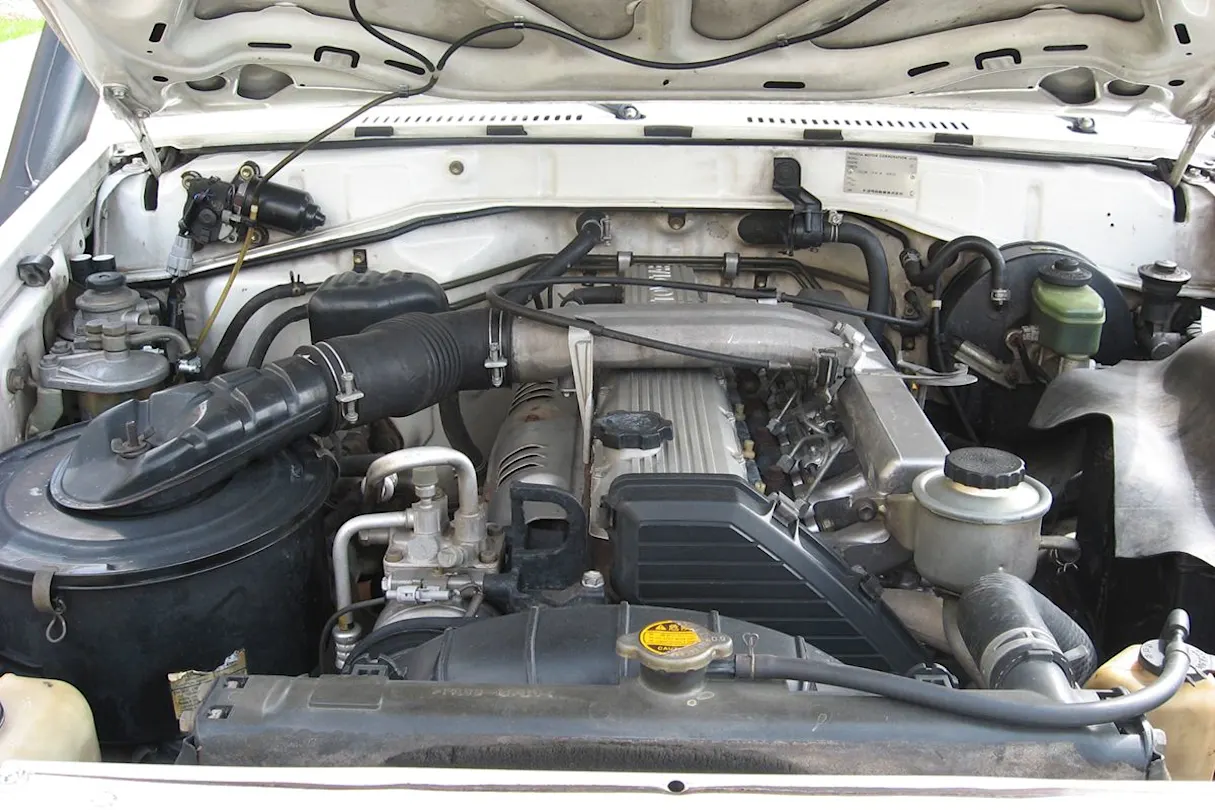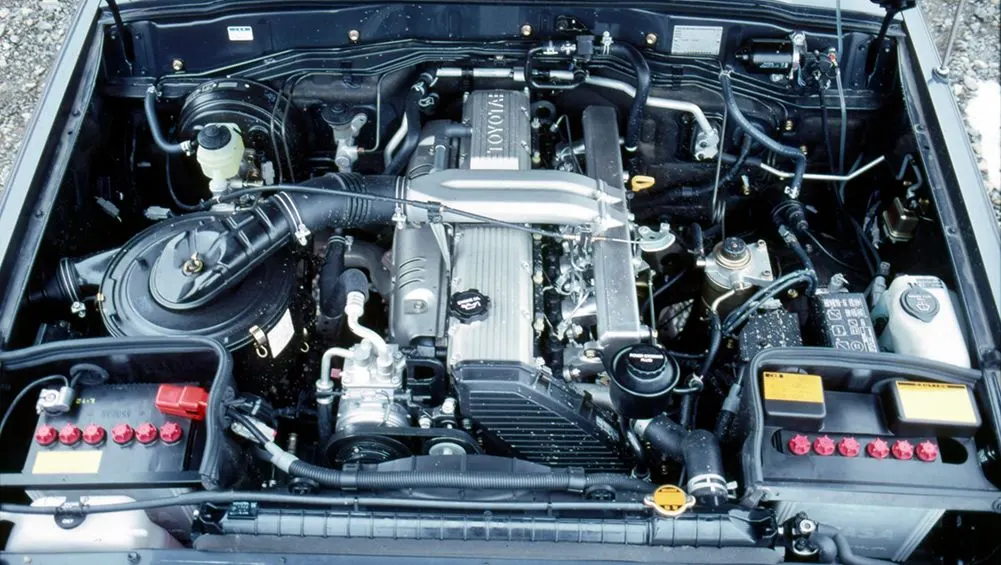While turbochargers have become nearly universal in modern diesel vehicles, Toyota’s 1HZ engine stands out as a classic example of a naturally aspirated diesel that earned legendary status without forced induction. Introduced in the early ’90s, the 1HZ found its home in various LandCruiser models, renowned for its unmatched reliability, simplicity, and endurance in harsh environments.
Despite lacking a turbocharger, the 1HZ is known for performing duties comparable to smaller turbo-diesels, with reports of engines surpassing one million kilometers without major repairs. Its consistent reliability and decent efficiency made it a favourite among outback travelers and heavy-duty users, although its fuel economy of 11–13 L/100km (and worse when towing) lags behind modern utes.
Proven Design And Broad Application Make The 1HZ A Reliable Long-Term Performer
The 1HZ features a rugged cast-iron block and head, with a 4.2-litre capacity and a long-stroke design (94mm bore and 100mm stroke). It’s an inline six-cylinder with a single overhead camshaft, using indirect injection and a high compression ratio of 22.4:1. It produces 96kW at 3800rpm and 285Nm at 2200rpm, with old-school mechanical fuel injection instead of common-rail tech.
Toyota deployed the 1HZ across various models, including the 80, 100 (technically 105), and 75 Series LandCruisers, as well as the Troop Carrier and some Coaster buses. It was always paired with a manual transmission and was never available in the Prado range or with an automatic gearbox. The 1HZ served from the early ’90s up until its retirement in 2007.
The 1HZ’s design is so dependable that issues are rare. Some owners have experienced cracked heads near the pre-combustion chambers, but overheating is usually to blame. Routine maintenance—like changing the timing belt every 100,000km—helps ensure longevity. Fuel pump wear typically shows up around 400,000km, and servicing access (like the thermostat) can be tricky but manageable.

Also Read: The Most Overengineered Cars in History (That You Can Still Buy) and Why They Still Matter Today
Rebuild Replace Or Turbocharge The 1HZ Engine To Match Performance Preferences
When the 1HZ eventually wears out, many owners opt for a second-hand replacement or a full rebuild. Basic rebuild kits cost around $1500, while turbo-ready kits cost double. Labour and machining add to the cost if not DIY. Reconditioned engines, some turbo-compatible, sell from $5000 to over $10,000 and are readily available from specialist shops.
The 1HZ is often compared to the turbocharged 1HDT, which offers significantly more power (151kW vs. 96kW) and torque (430Nm vs. 285Nm). Despite the performance edge of the 1HDT, many off-roaders prefer the 1HZ for its rugged simplicity and lack of electronics. Technical differences include the 1HZ’s indirect injection and higher compression, which make parts non-interchangeable between the two.
Although Toyota never offered a turbocharged 1HZ, aftermarket kits like Safari, AXT, and Denco provided options for boosting performance. These kits usually include a turbo manifold, turbo unit, and plumbing, with optional intercoolers and boost compensators. However, many loyalists avoid turbocharging to preserve the 1HZ’s simplicity, instead opting for tuned exhaust systems and regular maintenance to enhance performance.
Also Read: 10 Best First Cars for New Drivers and 5 to Avoid

